Nilda Oklay
Main menu:
Comet Observations
Work
|
Comet C/2012 S1 (ISON) Sungrazer Comet C/2012 S1 (ISON) will have its perihelion passage on November 28, 2013 at a distance of 0.012 AU from the Sun and should reach a brightness of -10 magnitude. Due to very close distance from the Sun, this comet will experience very high temperatures, which will trigger a high activity and possibly cause a break-up of the nucleus. Since sungrazer comets are usually not accessible to sophisticated night telescopes, very little is known about the processes taking place in Solar close vicinity. Therefore it's really important to observe them in order to understand their physical properties and their activity. Many ISON monitoring programs are already running and some publications are out to state its expected brightness. Hubble space telescope and Deep Impact have already imaged this comet as well as some ground based observatories. Many observations are scheduled by SDO (Solar Dynamics Observatory), STEREO (Solar TErrestrial RElations Observatory) and SOHO (The Solar & Heliospheric Observatory). Some ground based solar telescopes are also planning to observe it. We are also observing comet ISON from Turkish National Observatory (TUG). These observations are very special of being the first cometary observations performed in that observatory!!! We started to monitor the evolution of the dust coma features (fans, arcs, spirals, jets, etc) and possible break-up signatures in comet C/2012 S1 ISON. So far we have couple of images of the comet. With coming observations we will also determine rotational parameters, the location of active regions on the surface and study the cometary activity in pre- and post- perihelion state. We will also try to assess the dust color variations in the images to connect the structures (if they exist) with colour variations. Due to the unknown survival of the comet after the perihelion passage, these monitoring of the comet activity both in pre- and post perihelion will be an unique opportunity to achieve our scientific goals.
|
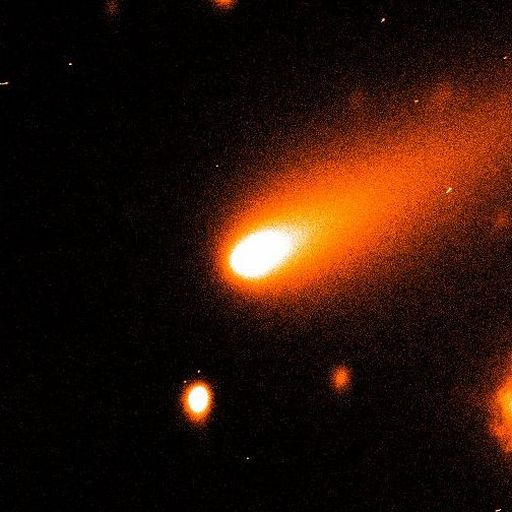 ISON from TUG (06/10/2013)
More ISON images
ISON from TUG (06/10/2013)
More ISON images
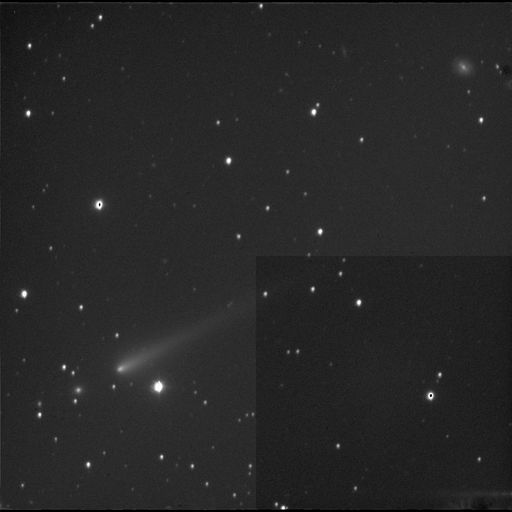
ISON from TUG (06/10/2013)
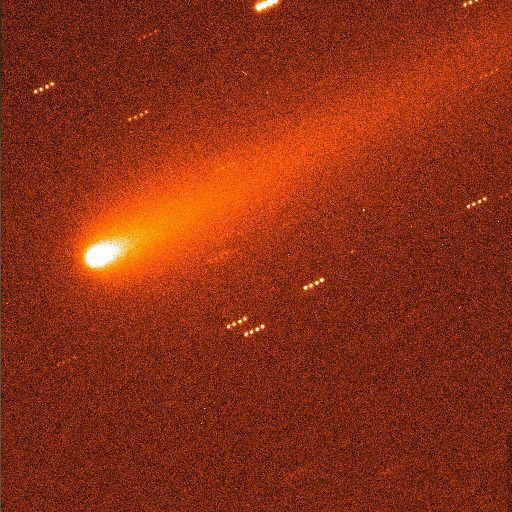
ISON from TUG (15/10/2013)
|
|
Observations, simulations and some preliminary results. More on ISON from TUG ACM2014 abstract EPSC2014 abstract |
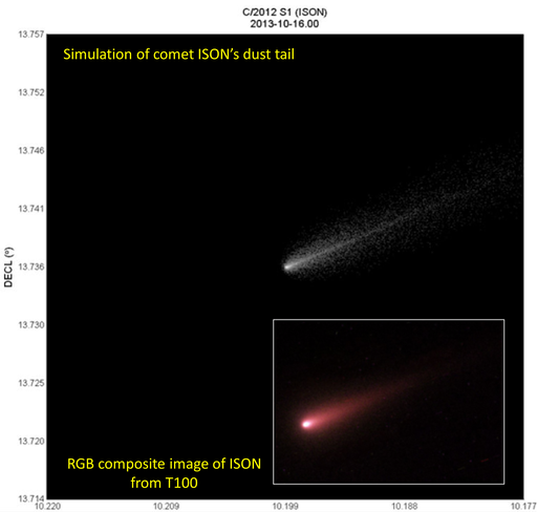
Simulation of comet ISON dust tail and RGB composite image obtained from T100.
|
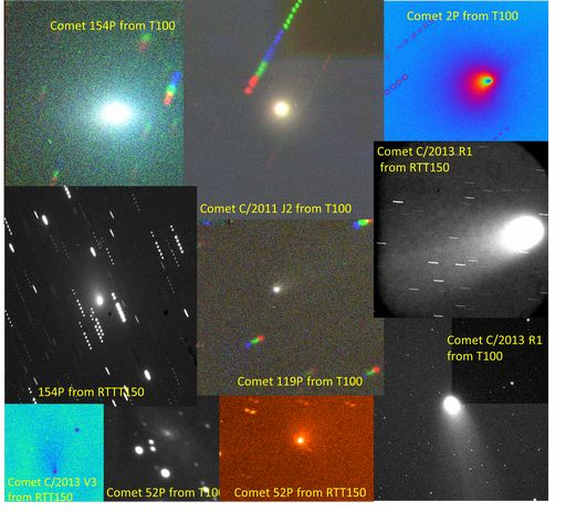
All other observed comets during TUG projects.
|